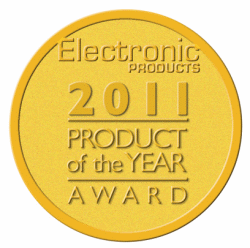TE Circuit Protection Group: Best features of bimetal breaker, PPTC device protect battery-based tools

The MHP30-36 is a metal hybrid polymeric positive temperature coefficient (PPTC) device that combines a bimetal protector in parallel with a PPTC device. The hybrid device offers 30-A hold current and an initial resistance of less than 2 mΩ. The PolySwitch (PPTC) polymeric positive temperature coefficient provides resettable overcurrent, overtemperature protection. The PolySwitch PPTC device is a conductive polymer-based thermistor. It is characterized by either negative temperature coefficient behavior (NTC) where the resistance of the device decreases with temperature, or positive temperature coefficient (PTC), behavior where the device resistance increases with temperature. The PPTC is made from a composite of semi-crystalline polymer and conductive particles.

The MHP (Metal Hybrid PPTC) device combines a bimetal protector and a PolySwitch PPTC device. This combination incorporates the best features of a bimetal breaker and PPTC and allows the PPTC technology to be used in higher current applications. The MHP device can be useful in dc-rated designs that require arc-suppressed, latched, high-current protection. The resettable MHP30-36 device provides excellent arc suppression characteristics compared to standard breaker devices that must limit the number of switching cycles since arcing between contacts may damage them. During normal operation, because contact resistance is very low, most of the current goes through the bimetal. When the contact begins to open, contact resistance increases quickly. If the contact resistance is higher than the PPTC device’s resistance, most of the current goes to the PPTC device and no (or less) current remains on the contact, therefore preventing arcing between the contacts. When current shunts to the PPTC device, its resistance rapidly increases to a level much higher than the contact resistance and the PPTC heats up. After the contact opens, the PPTC device starts to heat up the bimetal and keeps it open until the overcurrent event ends or the power is turned off.
The MHP device is used for high-power Li-ion technology such as portable or motive applications including cordless power tools, medical devices, and e-bikes. In addition, customer interest in the core MHP technology has led to some extensions of the technology to create three-terminal MHP devices that enable external electronic activation of the device via a signal line.
TE Circuit Protection Group
Menlo Park , CA
Technical assistance 800-227-7040
www.circuitprotection.com
Advertisement
Learn more about TE Circuit Protection Group





